Fix: Disk images couldn’t be opened ‘No Mountable File Systems’
Mac systems are one of the best working systems in the world. But even the best systems can get different kind of problems with time. One of the many errors can be “No Mountable File Systems”. Now, this error can be caused when the user tries to mount any dmg files on their Mac OS. In this article, we will check the possible reasons for this error and how to fix them.
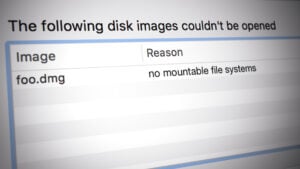
What causes No Mountable File Systems?
We investigated this particular issue by looking at various user reports and the repair strategies that are commonly used to resolve this error message. Based on our investigations, there are several different scenarios that will end up triggering this problem on Mac computers.
- Corrupt DMG File: A dmg file available for download can be corrupt, or when you try to download the file from the browser, it can be not downloaded correctly.
- File Format: Every file is not compatible with all the Mac OS available. Some new and latest ones might not work with the older OS because of the APFS format.
- Catalog Files Node: The catalog files node is used to keep the record of the file’s type and how the accessing type. These files are generated by the system itself, but there is a chance that it might get corrupted sometimes.
Now that you have a basic understanding of the nature of the problem, we will move on towards the methods. Down below, you’ll discover a collection of methods that other users in a similar situation have successfully used to resolve the issue.
Method 1: Repairing Corrupt DMG File
In most cases, the issue can be the corrupt or dmg file which is not downloaded correctly. So what you can do is to download the same dmg file again to make sure there is no problem with the download. Also, try downloading the file again with the download assistant plug-ins being off. You can try downloading the file in a different browser as well, or by using the Terminal and typing “curl -O url” without colons.
- Click the Magnifying glass at right top corner or just press (Command + Space)
- Search for Terminal and Enter
- Now you can type the following command in Terminal to download the file:
curl –O <URL>
Example:curl –O https://mirrors.ges.net.pk/vlc/vlc/3.0.6/macosx/vlc-3.0.6.dmg
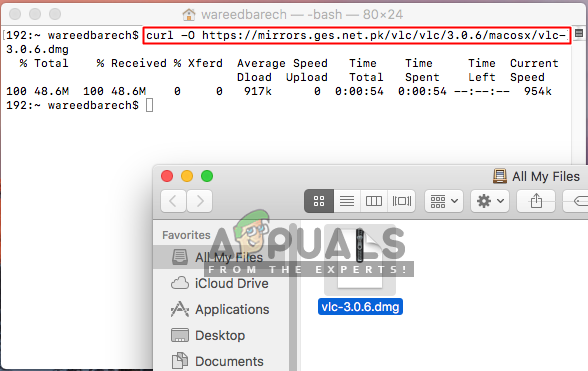
Downloading dmg file through terminal
Method 2: Mount it from Command Line
This method was tested for the disk image which was the image of ‘whole disk image’ created by the Disk Utility. But the file created with Disk utility was not working later. Also, if the “hdiutil attach disk.dmg” isn’t working and giving the same no mountable file systems issue, then you can try the following commands below:
- Press Command + Space buttons to click magnifying glass at the upper right corner of your screen
- Search for “Terminal” and Enter to open it
- Create the device node by the following command:
hdiutil attach –noverify –nomount disk.dmg
Note: disk.dmg will be the file name and directory address, you can just drag and drop to the Terminal
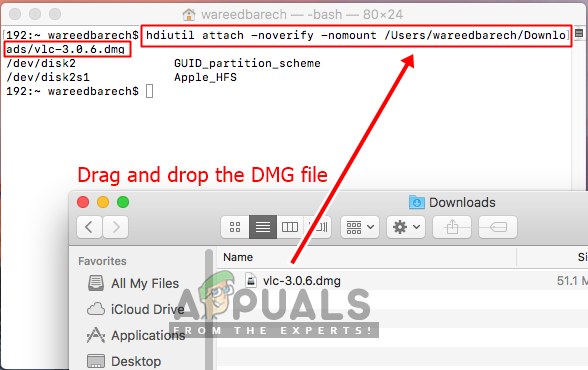
Terminal attach command for the dmg - Then, type the following command to find the disk list:
diskutil list
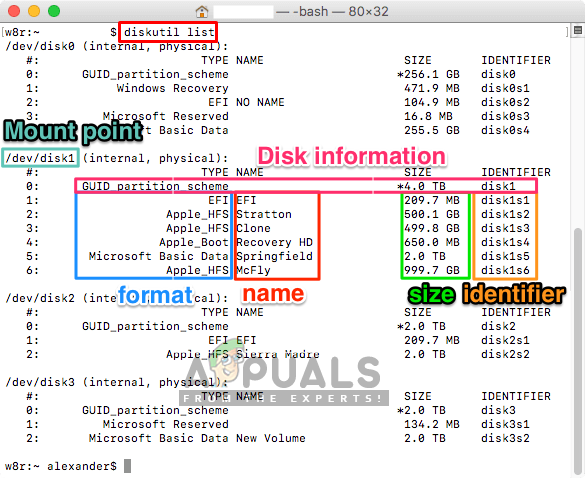
Getting the disk information through the diskutil list - Now mount the device by using the following command:
diskutil mountDisk /dev/disk1
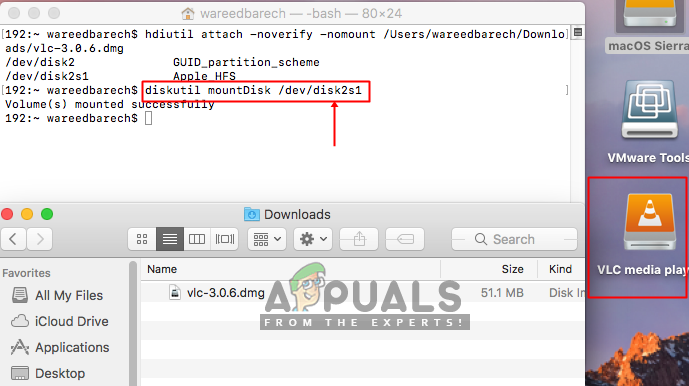
Finally mounting the dmg file Note: The disk1 part is the device identifier. Also, here mounting is for the entire disk, whereas normally you would mount a slice, such as disk0s2
Method 3: File System Format
The file that you are trying to mount on your OSX might not be compatible with your OSX. The file system format to APFS is not supported by the older OSX versions. Also, the system creates disk images in the new formats by default. You can find the disk format that is suitable for your current running OSX to make it work. And make sure to download the file that is compatible with your system file format.
To check your system is using APFS or HFS, you can try the following steps below:
- Press Command + Space or click the magnifying glass on top right
- Now search for Terminal and open it
- Now type the following command in Terminal:
diskutil info /
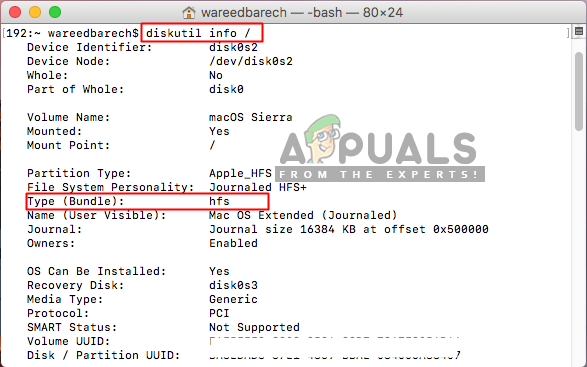
Checking your file format on your OS - You can check the “Type (Bundle)”, it will show you whether you are running HFS or APFS.





